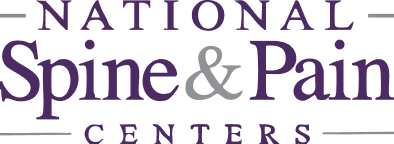Carpal Tunnel Syndrome
Pain, Numbness, and Tingling in the Hand Due to Pressure on the Median Nerve
An estimated one in twenty adults develops hand pain, numbness, and tingling after a wrist trauma, repetitive motions, or an inflammatory illness. This condition is known as carpal tunnel syndrome. It starts when the median nerve, an important nerve that provides grip strength and feeling in the hand, is irritated. Pain specialists diagnose and treat carpal tunnel syndrome so you can be pain-free and recover the full use of your hand.
What is Carpal Tunnel?
The carpal tunnel is a small area in the wrist, enclosed by eight small bones and the transverse ligament, a strong band that stabilizes the wrist.
Inside the carpal tunnel is the median nerve, an important nerve that runs from the forearm to the hand. The median nerve controls hand muscles and provides feeling in all the fingers except for the pinky.
Inside the carpal tunnel, the median nerve is surrounded by nine tendons. If there is any inflammation in these tendons or other wrist issues, it puts pressure on the median nerve, leading to hand numbness, tingling, pain, and weakness. These symptoms are known as carpal tunnel syndrome.
Symptoms of Carpal Tunnel Syndrome
Carpal Tunnel Syndrome develops slowly over time. Symptoms usually appear in the dominant hand if a person uses it for repetitive tasks. Symptoms can appear in both hands if a person uses them for repetitive motions like drill work or typing.
Symptoms in the hand(s):
Risks Factors for Carpal Tunnel Syndrome
Some people, especially women, are born with a narrow carpal tunnel and are more likely to experience pressure on the median nerve.
Illnesses such as rheumatoid or psoriatic arthritis cause inflammation in the wrist tendons and increase pressure on the median nerve.
Water retention in the wrist occurs with obesity, pregnancy, and hypothyroid disease. This can put pressure on the median nerve from outside the carpal tunnel.

-
1Get Started!Find a Doctor or Location that’s best for you! Find a Doctor
-
2Schedule an Appointment
-
3Prepare for AppointmentComplete the pre-appointment paperwork before your visit.
-
4See You at Your Appointment!We appreciate your trust and look forward to building a care plan for you.
-
Pioneering Pain
SolutionsOur doctors don't just use advanced treatments—they pioneer them. -
Quality-Assured
CareComprehensive quality protocols ensure consistent, exceptional care. -
Learning &
LeadingContinuous training and education keep us at the forefront of pain management. -
A Mission
of ReliefYour freedom from pain isn't just our goal—it's our reason for being.

